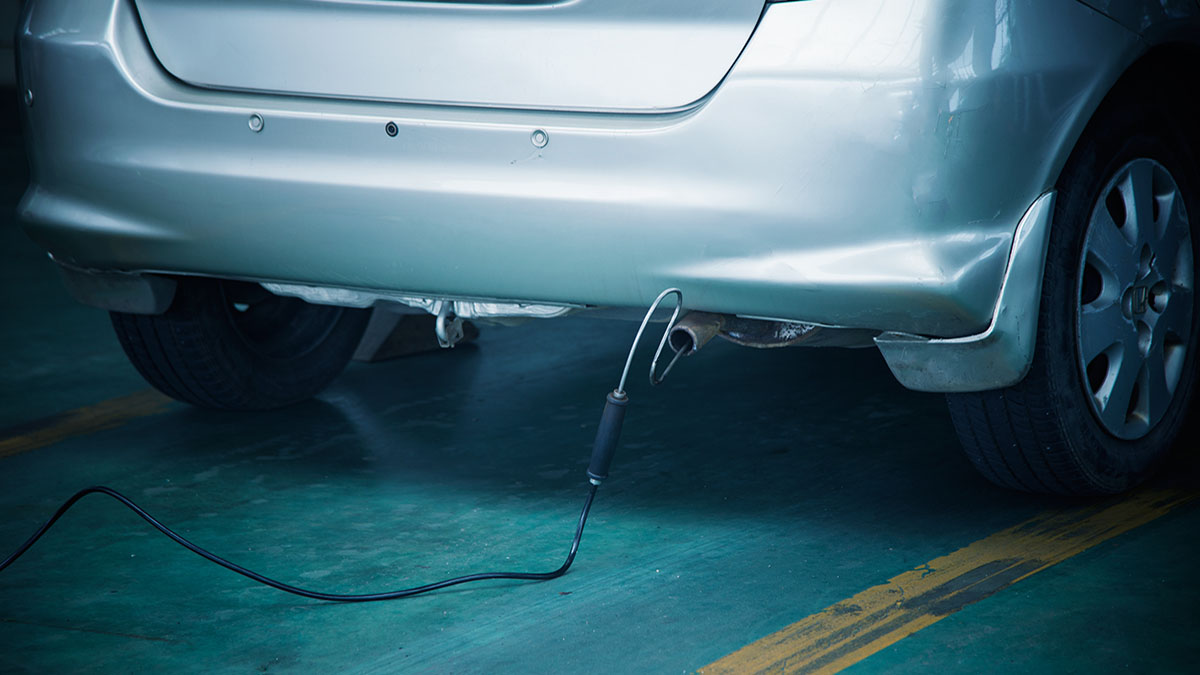While getting your car’s emissions tested can feel like a pain, emissions testing serves an important purpose and comes with the responsibility of owning a car. Vehicle emissions from your car’s exhaust system contain pollutants that can harm the planet, especially in large quantities. Emissions testing measures the level of pollutants your vehicle gives off to ensure it doesn’t surpass the legal amount and start polluting the air. Learn what goes on during an emissions test, which states require emissions testing, and how you can do your part as a driver to help keep our air clean.
What Does an Emissions Test Include?
An emissions test checks the amount of pollution your car’s exhaust system emits to see if it exceeds federal standards. The test measures the amount of carbon monoxide (CO), hydrocarbons (HC), and nitrogen oxides (NOx) in the exhaust emissions by attaching a probe to your vehicle’s tailpipe while your car is running. In some states, emissions tests are combined with an onboard diagnostics (OBD) test to make sure your car’s computer is regulating your exhaust levels properly.

Which States Have Mandatory Emissions Testing?
Currently, the District of Columbia and the following 33 states require emissions testing for all vehicles:
- Arizona
- California
- Colorado
- Connecticut
- Delaware
- Georgia
- Illinois
- Indiana
- Iowa
- Kentucky
- Maine
- Maryland
- Massachusetts
- Michigan
- Minnesota
- Missouri
- Montana
- Nebraska
- New Hampshire
- New Jersey
- New Mexico
- New York
- North Carolina
- Ohio
- Oregon
- Pennsylvania
- Rhode Island
- Tennessee
- Texas
- Vermont
- Virginia
- Washington
- Wisconsin
Testing requirements vary by state and county, so contact your local emissions testing station or DMV for more information.
The Importance of Emissions Testing for the Environment
Emissions testing is designed to prevent exhaust emissions from harming our environment by polluting the air. According to the Environmental Protection Agency (EPA), the Clean Air Act of 1970 reduced the amount of air pollution thanks to state and government regulations, which emissions testing aims to uphold.
By preventing air pollution, we can help maintain the quality of our air, which has positive implications for public health. Since cardiovascular diseases and other chronic issues can be caused by air pollution, emissions testing helps reduce the overall number of cases. Additionally, emissions testing can encourage drivers to maintain their vehicles’ exhaust systems and other components, like their car’s computer, which promotes safe driving.
What to Do If You Fail Your Emissions Test
If you pass your emissions test, you’ll receive a certificate indicating that your car is up to your state’s standards. You need this document to drive legally and renew your vehicle’s registration. If you fail your emissions test, you need to service and repair your vehicle before you can drive it. Your emissions testing report will indicate which pollutants your car is giving off, so you can visit the shop and have a mechanic fix your car’s problem areas. Afterward, take your car back to the testing location for a retest. If you fail again, you’ll need to repair your vehicle and take the test until you pass.
While being a responsible vehicle owner requires regular emissions testing, it also requires carrying insurance should you get into an accident on the road. If your car needs repairs from a collision or another covered event, car insurance can protect you against financial losses. Get a car insurance quote in under two minutes or read more on our insurance blog.








